It all started one morning, on my way out to start my day, when I noticed a patch of emerging mayapples. The tree and shrub leaves had not fully awakened from their winter slumber making the new patch of plants easy to see. The young students that I teach lovingly call this plant “the umbrella plant” due to its very umbrella like shape! There are many fascinating facts about the mayapple including that it is poisonous to humans and that it also has some cancer battling properties! Another interesting thing about this plant is that they are all connected underground with a rhizomal root system – where you see a patch, to put it simply, they are all a family.
One evening after the spring warmth and rain had visited and made all of the flowers come alive, I decided it was time for a walk to investigate the Mayapples that I have finally noticed on the property. I am sure they were there last year and it was only my observation skills that needed a refresher. I decided that instead of visiting the path on the driveway I would head up on the back side of the house where I had seen some earlier in the week (after we did a quick owl prowl one night – that’s another story!). I found a HUGE patch of the plants and then went to look for the flower.

In order to have a flower you need a plant that has 2 “umbrellas” out of one single stem. In this large patch, there are no doubles. They are all single plants. My mind is confused and not understanding, to the point where it tells my body that “you just aren’t looking hard enough, maybe you should lay on the ground and look through the field of plants, surely you are just missing it!” So yes, after some time on the ground, I still only see singles. I move to another patch, and another and yet another all on the upper side of the property. All single stems. No flowers. I decide to head down to the stream bed and back to the original patch I saw. (Please note that this is about an hour later and a mile of walking, laying on the ground and scratching my head!) I should have just gone to that patch first – there are some flowers!!!
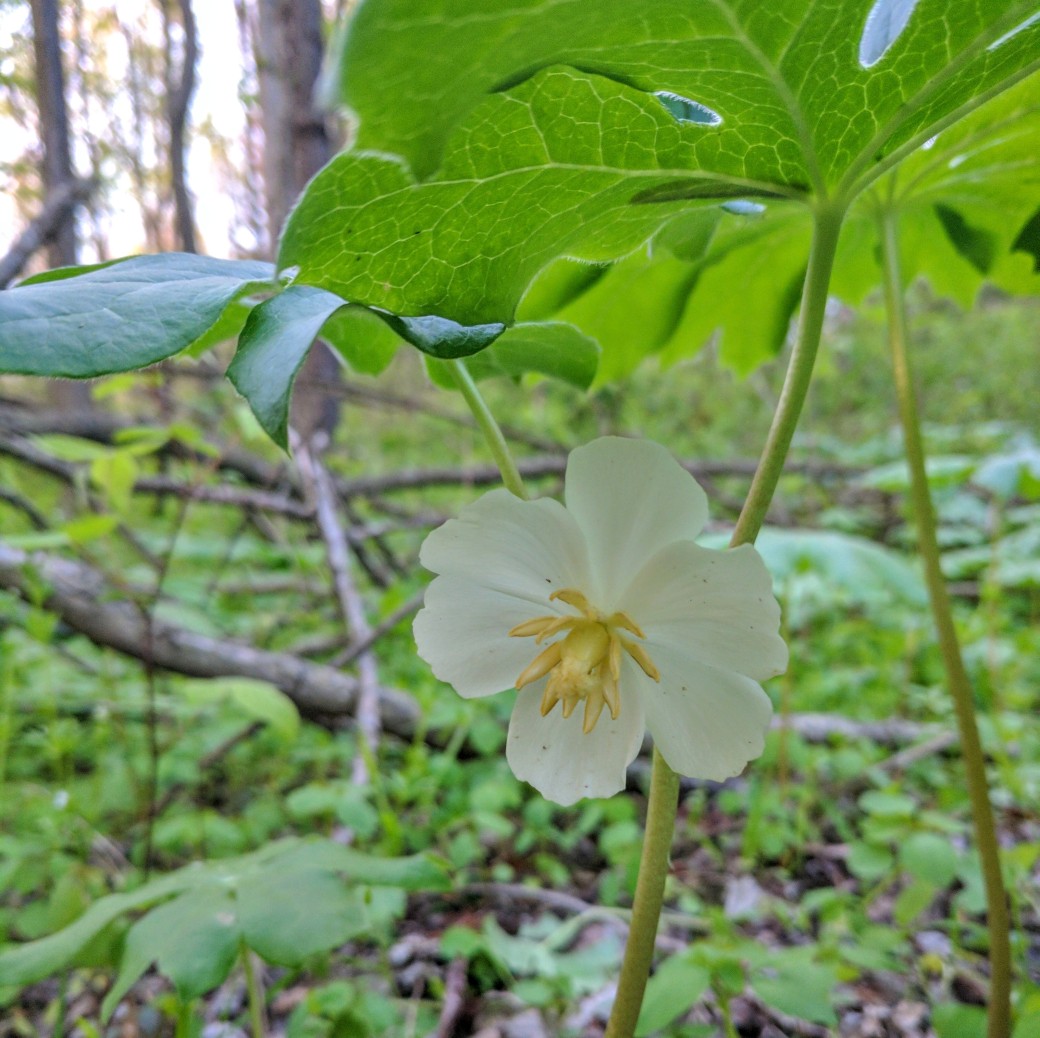
But it still lingers in my head – why so many plants with a single stem and no flowers? Why so many plants in the colonies on the upper side of the property? There had to be a hundred in the first colony I found. I need to also remember that I have only had the opportunity to explore about 5 acres of the family’s 70.
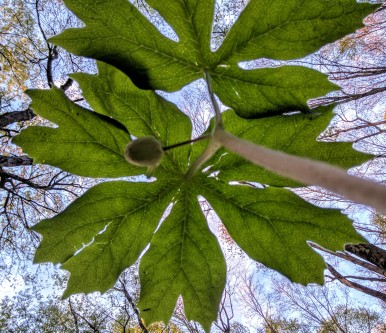
It turns out that the single stemmed plants could be young plants and this could be a young colony. Once a seed is dispersed to make a new colony (one article says that the Box Turtle is the primary seed distributor along with squirrels, grackles, white footed mouse, fox, raccoon and opossum) it will take at least 5 years for the plant to grow and another 8 years for those plants to produce a flower. After the plants flower they have decreased rhizome growth and a decreased chance of being forked and produce a flower the following year.
So, now the questions are
1. Do we have very young colonies OR
2. Do we have older colonies that produced fruit last year?
Only time will tell.
![]() June 2018
June 2018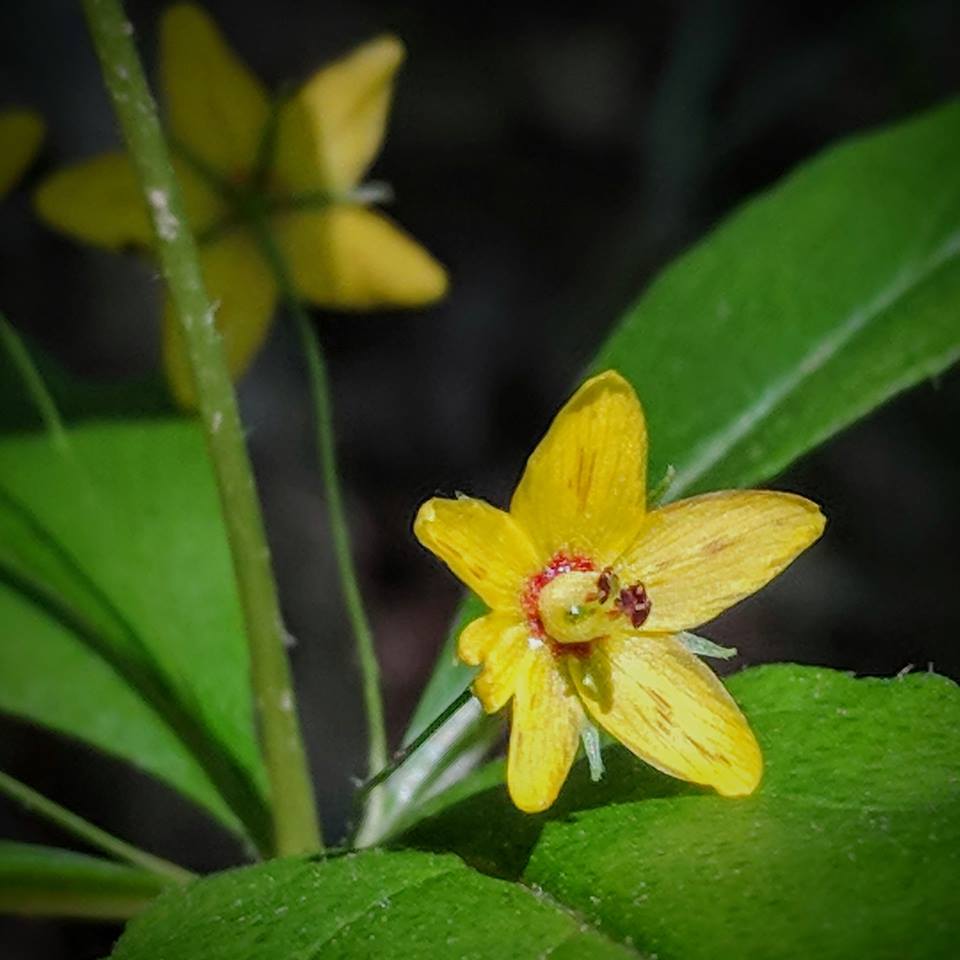
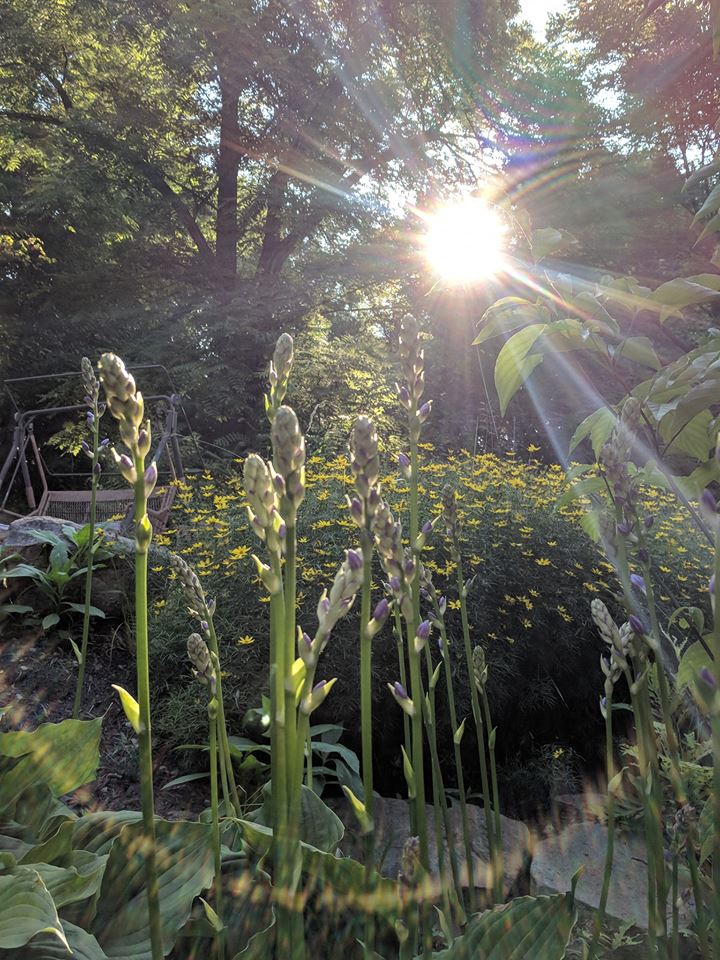
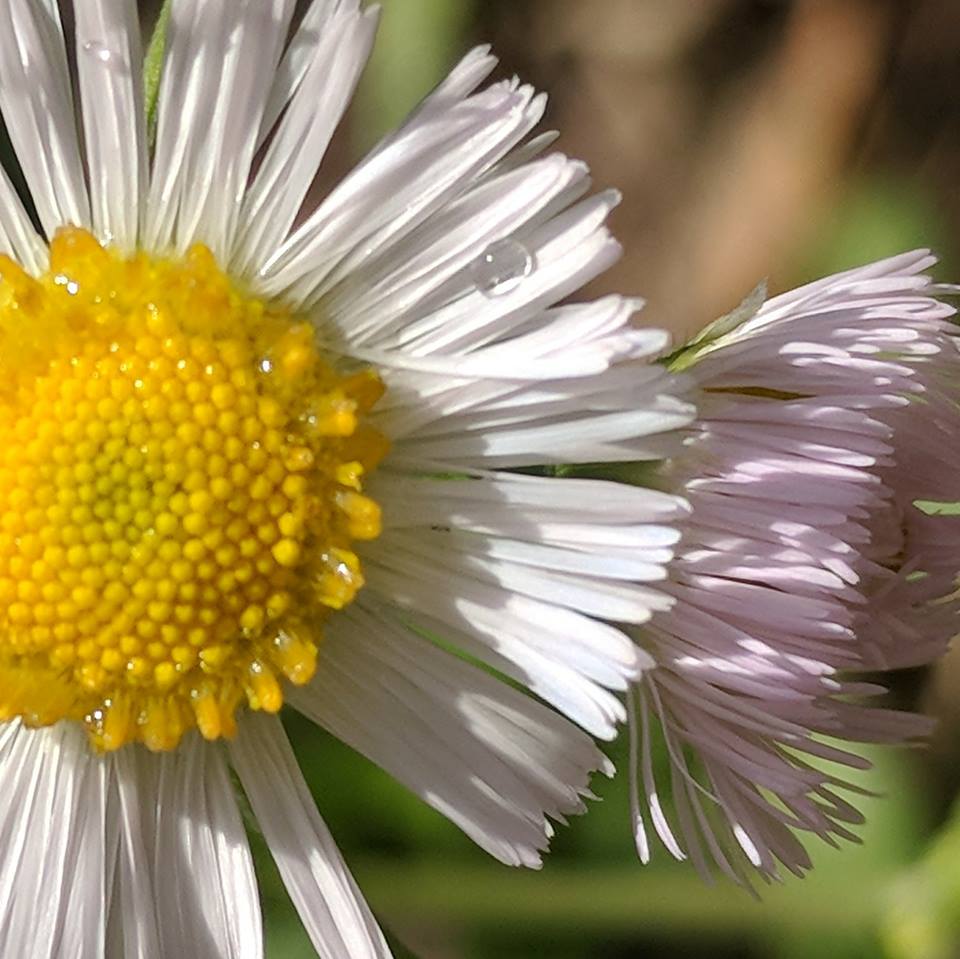

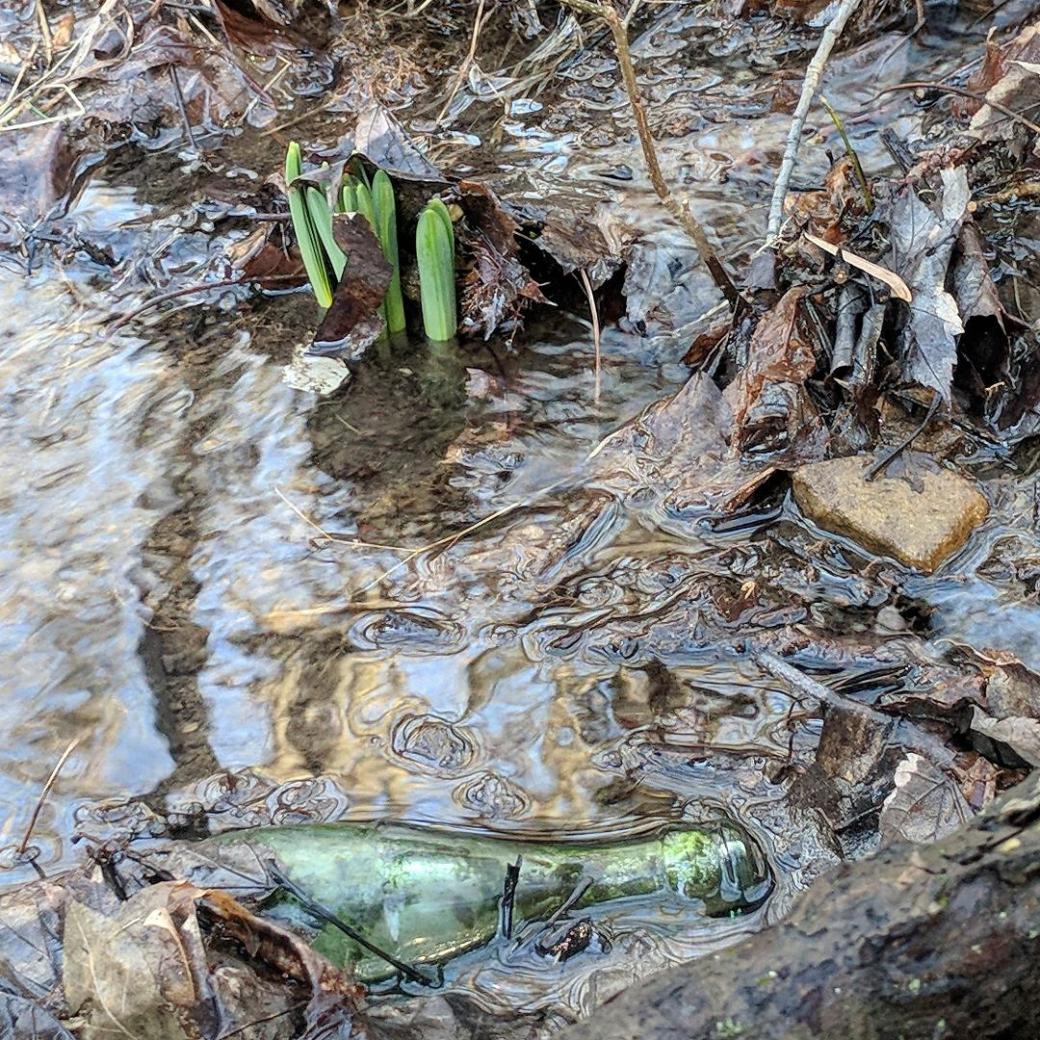
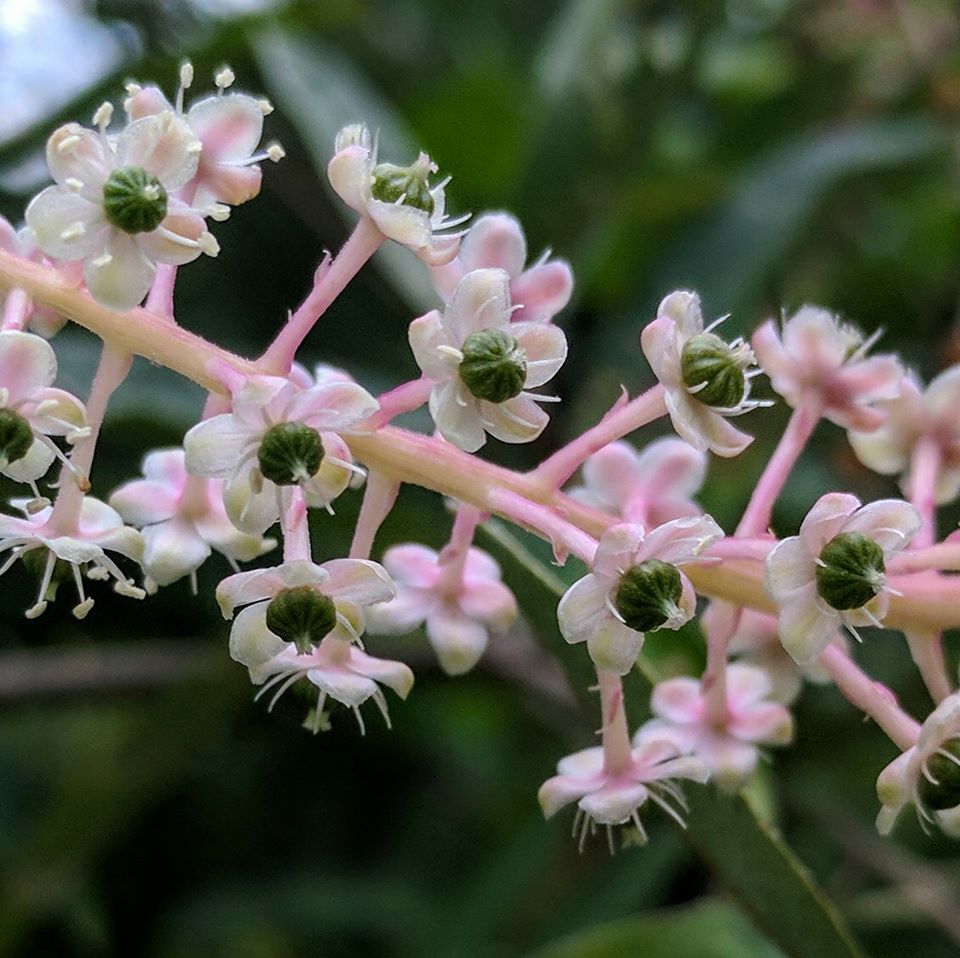






 It turns out that the single stemmed plants could be young plants and this could be a young colony. Once a seed is dispersed to make a new colony (one article says that the Box Turtle is the primary seed distributor along with squirrels, grackles, white footed mouse, fox, raccoon and opossum) it will take at least 5 years for the plant to grow and another 8 years for those plants to produce a flower. After the plants flower they have decreased rhizome growth and a decreased chance of being forked and produce a flower the following year.
It turns out that the single stemmed plants could be young plants and this could be a young colony. Once a seed is dispersed to make a new colony (one article says that the Box Turtle is the primary seed distributor along with squirrels, grackles, white footed mouse, fox, raccoon and opossum) it will take at least 5 years for the plant to grow and another 8 years for those plants to produce a flower. After the plants flower they have decreased rhizome growth and a decreased chance of being forked and produce a flower the following year.

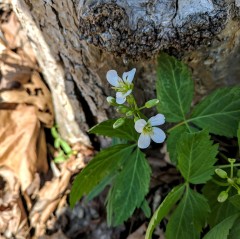 Super excited to find this one – a new one for me, anywhere! “It is found in moist woodlands usually in edge habitats and blooms from April to June. A member of the mustard family, it is typified by a four petal flower which blooms in a cluster on a single stalk above a single pair of toothed stem leaves each divided into three broad leaflets. After flowering, narrow seedpods appear just below the flower cluster. It grows approximately 30 cm (12 in) tall.”
Super excited to find this one – a new one for me, anywhere! “It is found in moist woodlands usually in edge habitats and blooms from April to June. A member of the mustard family, it is typified by a four petal flower which blooms in a cluster on a single stalk above a single pair of toothed stem leaves each divided into three broad leaflets. After flowering, narrow seedpods appear just below the flower cluster. It grows approximately 30 cm (12 in) tall.”